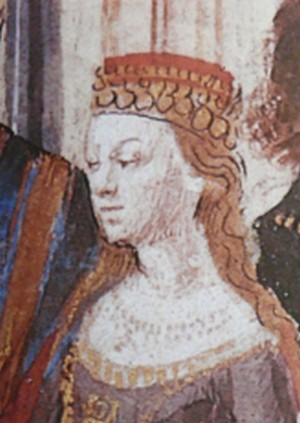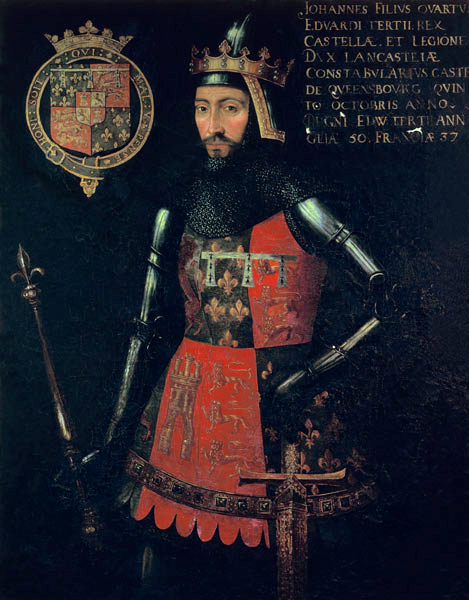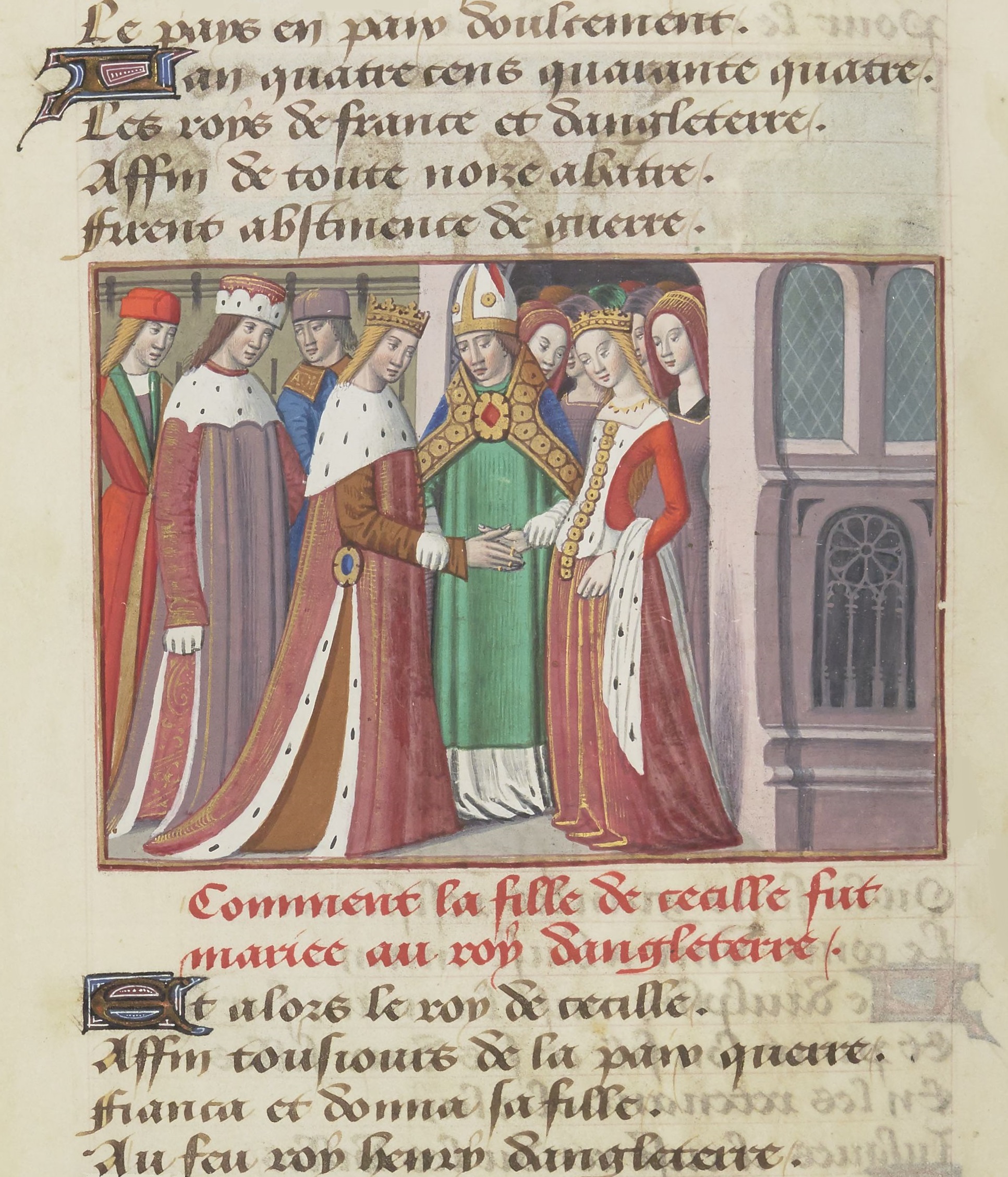|
Mont Orgueil
Mont Orgueil (; French for 'Mount Pride') is a castle in Jersey that overlooks the harbour of Gorey; a port on the east coast of the Island. It is known as Gorey Castle by English-speakers, and the "Old Castle" () by Jèrriais-speakers. The castle was first referred to as 'Mont Orgeuil' in an ordnance survey made in 1462, when the castle was under French occupation in the Late Middle Ages. The castle was the seat of royal authority on Jersey throughout the medieval period and served as the main fortress on the Island until the construction of Elizabeth Castle in 1594. It is classified as a Grade I listed building. Prehistory 1970s excavations found that the site had been fortified during the Iron Age, with an earth rampart at the top of the granite rock, that the castle is built on. Other materials were also found at the site, such as arrowheads and pottery, which date from the Neolithic period (4000–2500 BC). This suggests that there was human activity at the site before t ... [...More Info...] [...Related Items...] OR: [Wikipedia] [Google] [Baidu] |
St Martin, Jersey
St Martin (Jèrriais: ) is one of the twelve parishes of Jersey in the Channel Islands. It is north-east of St Helier. It has a population of 3,948.''Portrait of the Channel Islands'', Raoul Lemprière, 1970 The parish covers . The parish is a mixed rural-urban community and forms the north-east corner of the Jersey rectangle. It has the easternmost point of the Bailiwick. Most of the population is concentrated in the villages of the parish and along La Grande Route de Faldouet and the coast towards St Catherine's. The village of Gorey, Jersey, Gorey is partly located in the parish, with the remainder of the village in Grouville. In Gorey, the parish hosts one of the three principal English military fortifications located in Jersey: Mont Orgeuil (Gorey) Castle. The village of Maufant is also partly located in St Martin, along the boundary with St Saviour. History Historically it was called (Saint Martin the Old) to distinguish it from (known today as Grouville). This exp ... [...More Info...] [...Related Items...] OR: [Wikipedia] [Google] [Baidu] |
Philip II Augustus
Philip II (21 August 1165 – 14 July 1223), also known as Philip Augustus (), was King of France from 1180 to 1223. His predecessors had been known as kings of the Franks (Latin: ''rex Francorum''), but from 1190 onward, Philip became the first French monarch to style himself "King of France" (''rex Francie''). The son of King Louis VII and his third wife, Adela of Champagne, he was originally nicknamed () because he was a first son and born late in his father's life. Philip was given the epithet "Augustus" by the chronicler Rigord for having extended the crown lands of France so remarkably. After decades of conflicts with the House of Plantagenet, Philip succeeded in putting an end to the Angevin Empire by defeating a coalition of his rivals at the Battle of Bouvines in 1214. This victory would have a lasting impact on western European politics: the authority of the French king became unchallenged, while John, King of England, was forced by his barons to assent to Magna ... [...More Info...] [...Related Items...] OR: [Wikipedia] [Google] [Baidu] |
Cannon
A cannon is a large-caliber gun classified as a type of artillery, which usually launches a projectile using explosive chemical propellant. Gunpowder ("black powder") was the primary propellant before the invention of smokeless powder during the late 19th century. Cannons vary in gauge (firearms), gauge, effective range, mobility (military), mobility, rate of fire, elevation (ballistics), angle of fire and firepower; different forms of cannon combine and balance these attributes in varying degrees, depending on their intended use on the battlefield. A cannon is a type of heavy artillery weapon. The word ''cannon'' is derived from several languages, in which the original definition can usually be translated as ''tube'', ''cane'', or ''reed''. The earliest known depiction of cannons may have appeared in Science and technology of the Song dynasty#Gunpowder warfare, Song dynasty China as early as the 12th century; however, solid archaeological and documentary evidence of cannons do ... [...More Info...] [...Related Items...] OR: [Wikipedia] [Google] [Baidu] |
Richard Harliston
Richard Harliston (c. 1425–after 1495), became a yeoman of the king's chamber on the accession of Edward IV. He was made vice-admiral, in which capacity he came to Guernsey. Harliston was born in Humberstone, Lincolnshire, and brought up in the household of Richard, Duke of York. The recapture of Jersey Three years previously the castle of Mont Orgueil in Jersey had been captured by a French noble, Pierre de Brézé, Compte de Maulevrier, who had since held the eastern half of that island against Philip de Carteret, Seigneur of St Ouen. In 1468 Edward IV sent Harliston and his fleet to Guernsey, as part of a plan to invade France and recover Normandy. In Guernsey, Harliston learnt that this was a propitious moment to retake Jersey. He accordingly went quietly over to Jersey, secretly interviewed Philippe de Carteret, and immediate action was decided on before the French could get wind of what was to take place. A body of Yorkist troops came ashore at Plémont, Jersey. A ... [...More Info...] [...Related Items...] OR: [Wikipedia] [Google] [Baidu] |
Yorkist
The House of York was a cadet branch of the English royal House of Plantagenet. Three of its members became kings of England in the late 15th century. The House of York descended in the male line from Edmund of Langley, 1st Duke of York, the fourth surviving son of Edward III. In time, it also represented Edward III's senior line, when an heir of York married the heiress-descendant of Lionel, Duke of Clarence, Edward III's second surviving son. It is based on these descents that they claimed the English crown. Compared with its rival, the House of Lancaster, it had a superior claim to the throne of England according to Cognatic primogeniture#Male-preference primogeniture, cognatic primogeniture, but an inferior claim according to agnatic primogeniture. The reign of this dynasty ended with the death of Richard III of England at the Battle of Bosworth Field in 1485. It became extinct in the male line with the death of Edward Plantagenet, 17th Earl of Warwick, in 1499. Descent ... [...More Info...] [...Related Items...] OR: [Wikipedia] [Google] [Baidu] |
Louis XI Of France
Louis XI (3 July 1423 – 30 August 1483), called "Louis the Prudent" (), was King of France from 1461 to 1483. He succeeded his father, Charles VII. Louis entered into open rebellion against his father in a short-lived revolt known as the Praguerie in 1440. The king forgave his rebellious vassals, including Louis, to whom he entrusted the management of the Dauphiné, then a province in southeastern France. Louis's ceaseless intrigues, however, led his father to banish him from court. From the Dauphiné, Louis led his own political establishment and married Charlotte of Savoy, daughter of Louis, Duke of Savoy, against the will of his father. Charles VII sent an army to compel his son to his will, but Louis fled to Burgundy, where he was hosted by Philip the Good, the Duke of Burgundy, Charles's greatest enemy. When Charles VII died in 1461, Louis left the Burgundian court to take possession of his kingdom. His taste for intrigue and his intense diplomatic activity earne ... [...More Info...] [...Related Items...] OR: [Wikipedia] [Google] [Baidu] |
Wars Of The Roses
The Wars of the Roses, known at the time and in following centuries as the Civil Wars, were a series of armed confrontations, machinations, battles and campaigns fought over control of the English throne from 1455 to 1487. The conflict was fought between supporters of the House of Lancaster and House of York, two rival cadet branches of the royal House of Plantagenet. The conflict resulted in the end of Lancaster's male line in 1471, leaving the Tudors of Penmynydd, Tudor family to inherit their claim to the throne through the female line. Conflict was largely brought to an end upon the union of the two houses through marriage, creating the Tudor dynasty that would subsequently rule England. The Wars of the Roses were rooted in English socio-economic troubles caused by the Hundred Years' War (1337–1453) with France, as well as the quasi-military bastard feudalism resulting from the powerful duchies created by King Edward III. The mental instability of King Henry VI of Englan ... [...More Info...] [...Related Items...] OR: [Wikipedia] [Google] [Baidu] |
House Of Lancaster
The House of Lancaster was a cadet branch of the royal House of Plantagenet. The first house was created when King Henry III of England created the Earldom of Lancasterfrom which the house was namedfor his second son Edmund Crouchback in 1267. Edmund had already been created Earl of Leicester in 1265 and was granted the lands and privileges of Simon de Montfort, 6th Earl of Leicester, after de Montfort's death and attainder at the end of the Second Barons' War. When Edmund's son Thomas, 2nd Earl of Lancaster, inherited his father-in-law's estates and title of Earl of Lincoln he became at a stroke the most powerful nobleman in England, with lands throughout the kingdom and the ability to raise vast private armies to wield power at national and local levels. This brought himand Henry, 3rd Earl of Lancaster, Henry, his younger brotherinto conflict with their cousin King Edward II, leading to Thomas's execution. Henry inherited Thomas's titles and he and his son, who was also calle ... [...More Info...] [...Related Items...] OR: [Wikipedia] [Google] [Baidu] |
Pierre De Brézé
Pierre II de Brézé or de Brezé ( – 16 July 1465), Count of Maulevrier and Évreux (), was a French soldier and courtier in the service of kings Charles VII and Louis XI. He is sometimes distinguished from others of his house as Pierre II. Early life Pierre de Brézé was born . He was the son of Pierre I de Brézé (d. ) and Clémence Carbonnel. Career De Brézé rose to prominence during the Hundred Years' War. In 1433, he arrested Georges de La Trémoille on a royal warrant, after Yolande of Aragon and constable Arthur de Richemont forced him from power. De Brézé was knighted by Charles of Anjou in 1434 and subsequently joined the royal council. In 1437 he became seneschal of Anjou, and in 1440 of Poitou. During the Praguerie he served with the king's forces against those of the rebel nobles and the dauphin (heir apparent) Louis XI, who would bear a lasting grudge against him. De Brézé fought against the English in Normandy in 1440–1441 and in Guienne in 14 ... [...More Info...] [...Related Items...] OR: [Wikipedia] [Google] [Baidu] |
Henry VI Of England
Henry VI (6 December 1421 – 21 May 1471) was King of England from 1422 to 1461 and 1470 to 1471, and English claims to the French throne, disputed King of France from 1422 to 1453. The only child of Henry V of England, Henry V, he succeeded to the Throne of England, English throne at the age of eight months, upon his father's death, and to the List of French monarchs, French throne on the death of his maternal grandfather, Charles VI of France, Charles VI, shortly afterwards. Henry was born during the Hundred Years' War (1337–1453), he is the only English monarch to have been crowned King of France, following his coronation at Notre-Dame de Paris in 1431 as Henry II. His early reign, when England was ruled by a Regency government, 1422–1437, regency government, saw the pinnacle of English power in Kingdom of France, France. However, setbacks followed once he assumed full control in 1437. The young king faced military reversals in France, as well as political and financia ... [...More Info...] [...Related Items...] OR: [Wikipedia] [Google] [Baidu] |
Margaret Of Anjou
Margaret of Anjou (; 23 March 1430 – 25 August 1482) was Queen of England by marriage to King Henry VI from 1445 to 1461 and again from 1470 to 1471. Through marriage, she was also nominally Queen of France from 1445 to 1453. Born in the Duchy of Lorraine into the House of Valois-Anjou, Margaret was the second eldest daughter of René of Anjou King of Naples, and Isabella, Duchess of Lorraine. Margaret was one of the principal figures in the series of dynastic civil wars known as the Wars of the Roses and at times personally led the Lancastrian faction. Some of her contemporaries, such as the Duke of Suffolk, praised "her valiant courage and undaunted spirit" and the 16th-century historian Edward Hall described her personality in these terms: "This woman excelled all other, as well in beauty and favour, as in wit and policy, and was of stomach and courage, more like to a man, than a woman". Owing to her husband's frequent bouts of insanity, Margaret ruled the kingdom ... [...More Info...] [...Related Items...] OR: [Wikipedia] [Google] [Baidu] |
Bertrand Du Guesclin
Bertrand du Guesclin (; 1320 – 13 July 1380), nicknamed "The Eagle of Brittany" or "The Black Dog of Brocéliande", was a Breton knight and an important military commander on the French side during the Hundred Years' War. From 1370 to his death, he was Constable of France for King Charles V. Well known for his Fabian strategy, he took part in seven pitched battles and won the five in which he held command. Origins Bertrand du Guesclin was born at Motte-Broons near Dinan, in Brittany, first-born son of Robert du Guesclin and Jeanne de Malmaines. His date of birth is unknown, but is thought to have been sometime in 1320. His family was of minor Breton nobility, the seigneurs of Broons. His native language was Gallo, a langue d'oïl. Bertrand's family may have claimed descent from Aquin, the legendary Muslim king of Bougie in Africa (Viking in effect, the legend conflates Saracens and Arabs with Normans and places Aiquin's origins in the north country) a conceit de ... [...More Info...] [...Related Items...] OR: [Wikipedia] [Google] [Baidu] |








